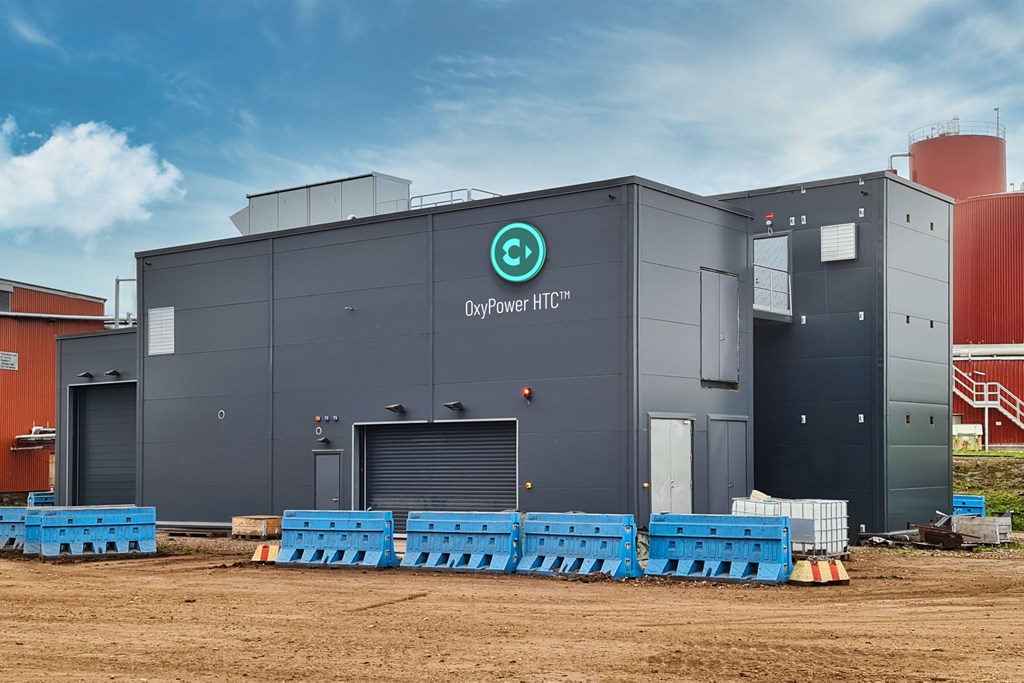
C-Green's revolutionary solution - a win for both the economy and the environment
C-Green's innovative solution OxyPower HTC that transforms large amounts of sludge into an energy rich material, has made the company go from idea to the first industrial facility at Stora Enso in Finland in only five years.
- The potential is huge, in Sweden alone, there is room for more than 50 facilities and over 2.000 facilities in Europe, says Peter Axegård, CTO at C-Green.
Five years ago, the founders Erik Odén, Fredrik Lundqvist and Fredrik Öhman from Örnsköldsvik, developed an idea to transform sludge from e.g. the pulp and paper industry, to a high-energy material. The technology that is being used is hydrothermal carbonization (HTC) in combination with wet oxidation, where biofuel is created from renewable residues - an environmentally friendly process that does not need any added heat. In the process, the wet material is inserted in a pressure cooker which holds 200 degrees. This generates a gradual carbonization of the organic substances in the sludge which then form a slurry of particles. This slurry is then dewatered to a dry content of about 60 percent. The dewatered material is called HTC biocoal and smells like roasted coffee. HTC biocoal is enriched with phosphorus and can be used as fuel or soil improvers.
A pilot plant was up and running 2017 at Domsjö development area in Örnsköldsvik in collaboration with RISE Processum. The region has both the right competence and the infrastructure needed. Shortly thereafter, Stora Enso heard about the technology and chose to invest in the first facility next to the fluting mill in Heinola, north of Helsinki. The final commissioning is underway during the last quarter of 2020.The facility will produce over 2.500 tonnes of renewable biofuel annually and at the same time, the annual emission of greenhouse gases from the mill is reduced with corresponding at least 2.500 tonnes CO2eq.
- Stora Enso is going to use the HTC-product in an energy furnace that produces electricity for the mill and district heating for the urban area. In this way, fossil fuels are replaced with biofuels. This is being done on a large scale and it feels good that Stora Enso sees the potential in our solution, says Peter Axgård.
C-Green OxyPower HTC- process can convert several kinds of wet waste into biocoal, anything from sludge from municipal and industrial sewage treatment plants to digestate from biogas production.
Sludge has been a problem to solve that the industry, agriculture and municipal treatment plants get as a by-product from water purification. Sludge is 70-80 percent water, often has a bad odour and can contain pathogens and environmentally harmful substances. These are obvious challenges which are solved by C-Green's OxyPower HTC-process. In addition, sludge emits large amounts of greenhouse gases, methane and nitrous oxide, when stored, which can be avoided completely with the C-Green process.
- It is a smart solution. It meets high demands on circular adaptation and is also a carbon sink which is a good contribution to decrease the climate effects, says Peter Axegård.
Since the solution is globally scalable, there is a big business potential.
- In one year, each person generates between 70-100 kg of sludge, which means 200.000 tonnes of sludge in Stockholm City alone. We can handle 30.000 tonnes at one facility so there is a great potential, says Peter Axegård and continues:
- On the continent and especially in Germany with surrounding countries, there is an even bigger potential to reduce the amount of sludge that today go from the treatment plant to incineration. It will also provide great environmental benefits.
C-Green is now looking at a variety of possible applications. Both manure and fibre banks are potentially very interesting. In US, Germany and Poland, the manure is a big challenge, not least considering that the manure contains big amounts of antibiotic residues, multi-resistant bacteria and large amount of nitrogen that can spread in the environment and is a major source of greenhouse gas.
- Our work is long term. We know that the technology works well on these streams. The US Department of Agriculture has also evaluated the application of the HTC technology on manure and has gotten positive results, he says.
A lot of small treatment plants primarily produce biogas to reduce the sludge volume, but it is a costly investment. C-Green's OxyPower HTC-facility is significantly cheaper.
- When our facility is in place, the biogas plant is not needed since we take care of all the sludge and instead produce HTC biocoal - this environmental technology really turns things upside down. Food producers can face an investment of quarter of a billion SEK for a biogas plant. Our facility cost just under 100 million SEK and is a complete solution for both the environment and the economy. says Peter Axegård.
Read more about C-Green here!
